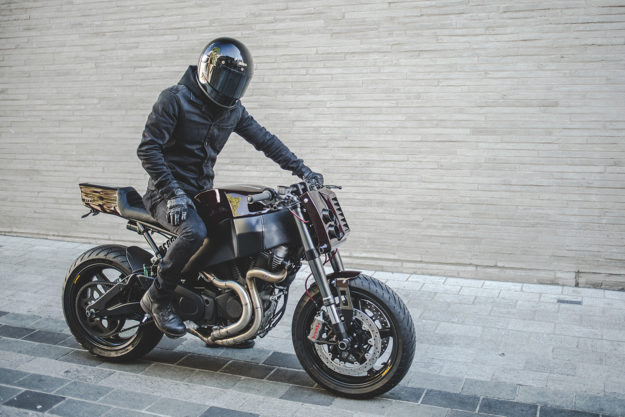
There has always been something special about the machines built inside the deBolex workshop, a few miles south of London, England. They are sleek and minimal, with factory levels of finish hiding some very smart engineering and technical decision-making.
Shop owner Calum Pryce-Tidd is one of Britain’s finest bike builders, and takes his inspiration from the racing cars of the 1950s and 60s. In those days, teams would often remove heavy steel bodies and replace them with lightweight aluminum versions.
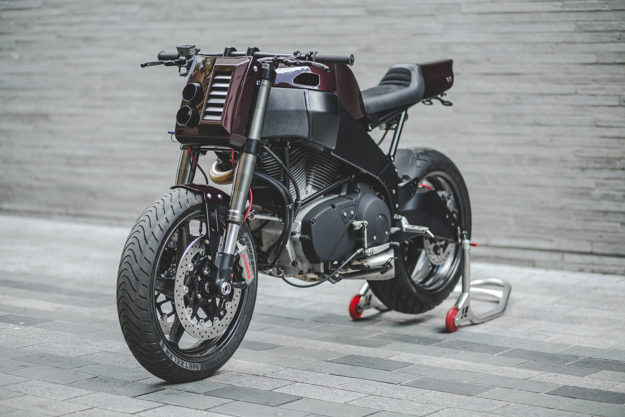
“It’s an important part of our ethos not to tear up a great production bike to make something potentially harder or less practical to ride,” says Calum. (And amen to that.)
“We celebrate the efforts of the manufacturer by retaining the core of the bike, dressing it in a new set of clothes and upgrading components.” The result is invariably a usable and high quality one-off custom.
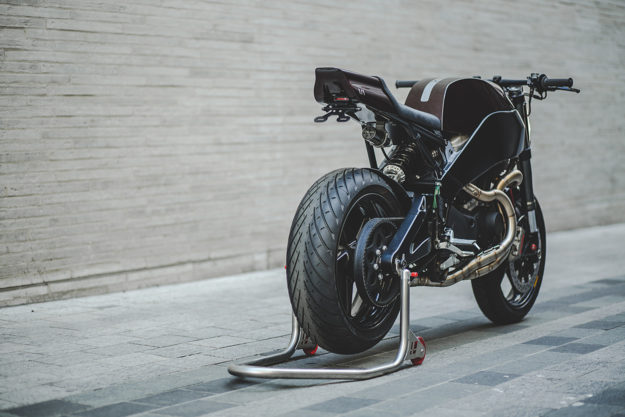
A Buell is not the easiest bike to modify, but it ticks a lot of boxes from an engineer’s point of view. The mass is centralized, the frame is extremely rigid, and weight is carried low. If there’s a weak point on the typical Buell, it’s usually the styling.
The XB9SX City X was regarded as an oddity when it came out, just over ten years ago. Part streetfighter and part urban scrambler, this particular variant on the Lightning theme was a machine before its time.
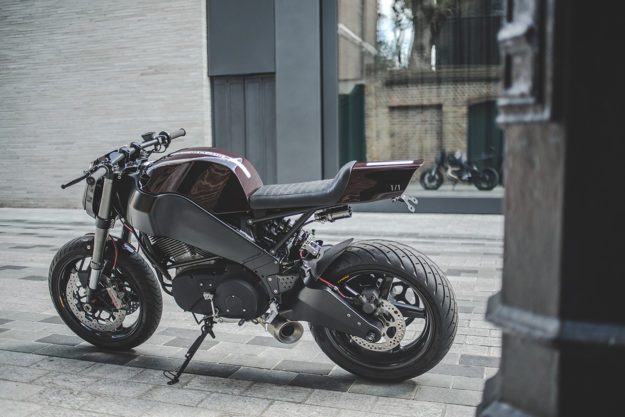
This XB9 is owned by Todd Kleparski, a London-based independent film producer. “Todd bought the XB9 from new,” Calum tells us. “But after ten years of fun, he felt it was time to change things up. He rode down to see us last summer, and left with an open brief—our favorite kind of brief!”
At deBolex, the first job is always to set the stance of the bike. After a session with the tape measure, Calum and his partner Des Francis decided on a front-end swap.
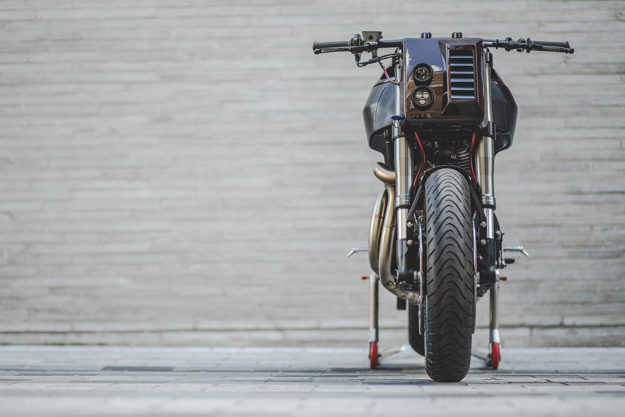
“The Buell front forks are quite short, so we headed to my local Ducati dealer and found that Showa forks from an 899 Panigale would work well.”
Fastec Custom Racing machined up a set of yokes, and once the front end was in place, deBolex installed Panigale-spec Brembo Serie Oro discs and new Brembo monobloc calipers. Rear suspension comes from a one-off Maxton RT10 mono shock with a remote reservoir.
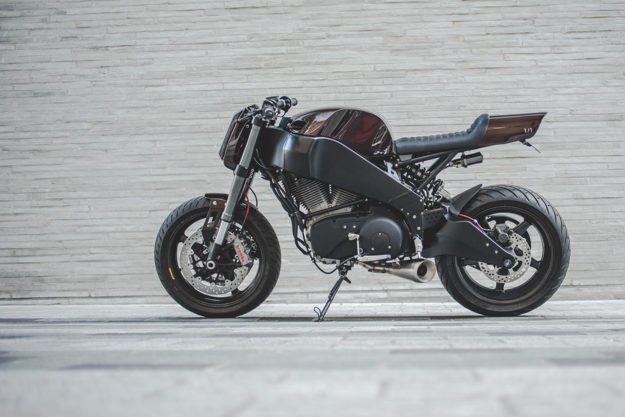
The Buell’s new wheels are ultra-light five-spoke carbon fitments from the race specialists Dymag. The front wheel is already in the catalog as an 899 fit, and Dymag measured up the rear wheel to create a matching one-off. The rubber is Metzeler’s latest Roadtec 01 compound.
With the bike now sitting perfectly, Calum and Des could start work on the fabrication. “The XB9 is a challenging bike to customize, given its unusual frame design. The frame is also the fuel tank, so what looks like the ‘tank’ is just a skin covering to the top half of the engine, air filter and battery.”
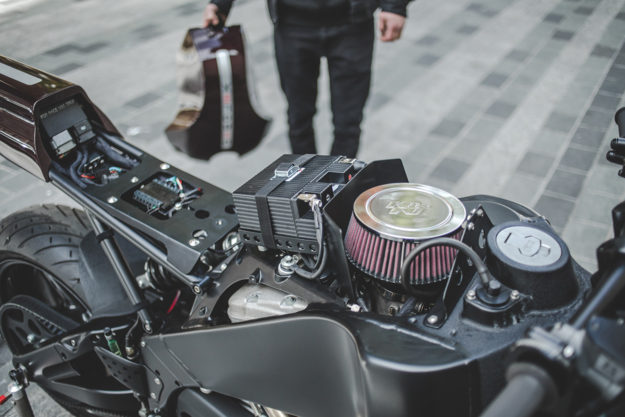
There’s now a Shorai lithium battery and air induction system on the top of the frame, covered by a new tank ‘skin.’ There are five distinct sections under the elegant metal, with ports funneling air to a K&N air filter.
At the outlet end, the boxy dual-chamber Buell exhaust muffler is gone. Lovely new pipework (fabricated in-house) meets under the engine and terminates in a simple Spark muffler.

As with all their builds, deBolex have used traditional metal shaping techniques to fabricate the panels from aluminum—resulting in very lightweight bodywork. “The Buell’s frame/tank steup pushed us away from a traditional design, towards something more modern and futuristic,” says Calum.
“In keeping with this theme, we also relocated the oil cooler to between the yokes before we fabricated the front fairing.” A vent on the fairing sits alongside tunnel housings for the dip and main beam headlights.

The tail unit is unapologetically chunky, with hints of mid-70s Kawasaki Z styling. It sits on a new subframe fashioned from 25mm cold drawn seamless tubing.
“The lower mounting position gave us a subframe line that would disappear into the tail section,” says Calum. “The subframe is also a mount for the ECU and fuse box, along with a Motogadget m-Unit.”
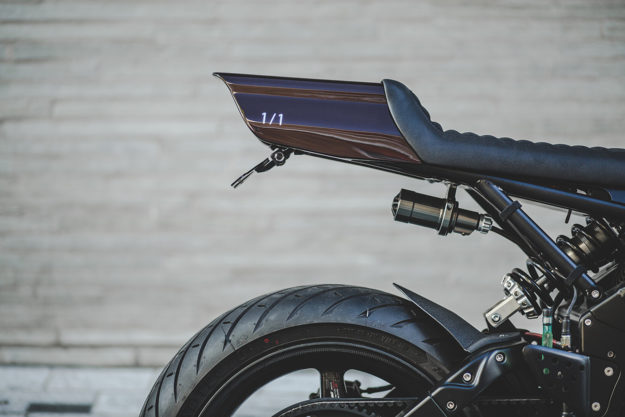
Those vitals sit very snugly in the tail, but there’s a quick release catch for fast seat removal, giving easy access to the electronics. The licence plate holder underneath (with blinkers attached) is also easy to remove, and just behind it is a cylindrical LED taillight from the German brand Highsider.
Motogadget also supplied a Motoscope Pro speedo and discreet M.blaze bar-end blinkers, butted up against Renthal grips on classy Rizoma flat bars. The levers are from the Italian company Accossato.
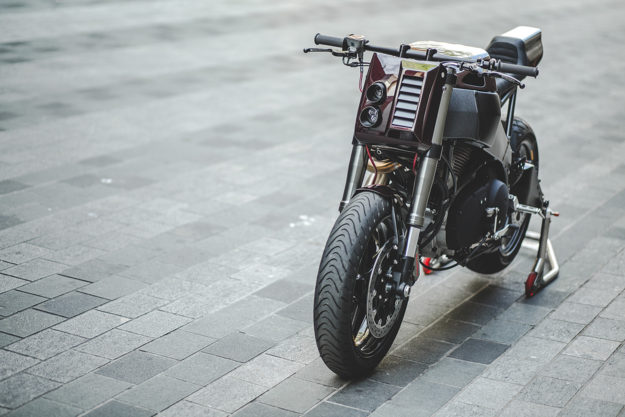
That imposing frame is now finished partly in satin black, and partly in black crackle, with a deep, dark Harley-Davidson metallic red for the bodywork. There’s a silver stripe down the midpoint of the tank with a deBolex logo, leading to the handmade seat—upholstered in a combination of waterproof Alcantara and soft black vinyl.
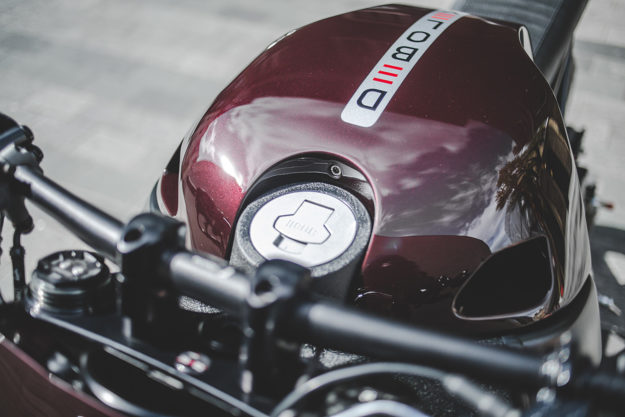
Look closely at the tail unit and you’ll spot a tiny ‘1/1’ motif. “That represents our ‘One of One’ series,” says Calum. “Each build is unique.”
Lots of builders refuse to replicate their bikes, but few can say they complete all stages of the build in-house—from design and fabrication, through to the paintwork and trimming.
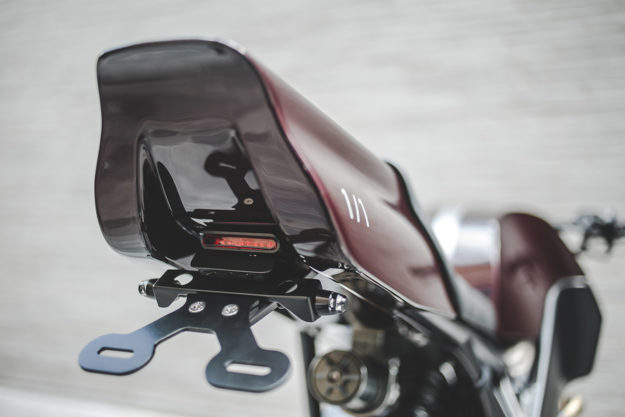
Given the impeccable quality of work, that makes this Buell even more remarkable. Top marks to Calum and Des for a truly amazing creation—and if you’d like to see it in the metal, head over to the Bike Shed Show at London’s Tobacco Dock on 26-28 May.
deBolex Engineering | Facebook | Instagram | Images by Autohouse London | Instagram
